We may earn money or products from the companies mentioned in this post.
Whether you want a casual stroll or a challenging mountain pass hike, Mt. Hood has something for everyone. With so many terrific Mt. Hood hikes, it can be difficult to narrow down the list.
From the historic trails of Crater Lake to Mt. Hood’s sweeping views, these hikes let you see the mountain’s beauty.
Mount Hood History
The Hood National Forest is a place that tells stories of the first peoples. Some of the first tribes to inhabit the area were the:
- Multnomah
- Chinook
- Clackamas
- Cowlitz
- Wasco
These tribes left behind a history of culture and customs.
First Peoples
Before there was a national forest, the area was home to a large group of Native Americans. These first peoples lived off the land. They often walked along trails, that are now the Mt. Hood hikes, to harvest the area’s bountiful:
- Fish
- Berries
- Game
They also used the area’s deep caves and dense forests for shelter. The early peoples left behind relics and stories that have been passed down for generations.
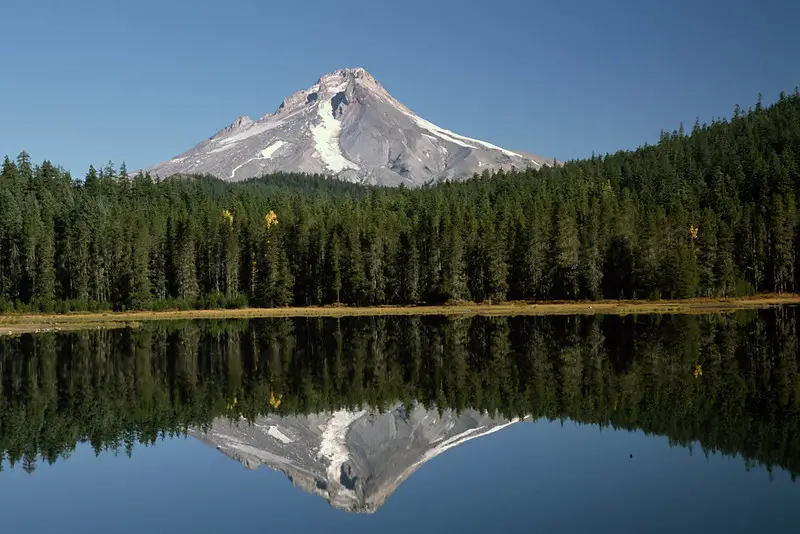
How Did Mt. Hood Became A National Forest?
In the mid 1800s, the United States government began to buy the land around Mt. Hood. The land became part of the national forest.
In 1891, the federal government passed the Forest Reserve Act. The act allowed the President to set aside forest lands to protect them.
President Benjamin Harrison was the first to take advantage of this act. In 1892, he declared the Cascade Mountain Range of Oregon as part of the newly created Mount Hood National Forest. Mt. Hood is in the Cascade Range.
This marked the beginning of Mt. Hood National Forest, an area of over 600,000 acres of outdoor fun including:
- Mt. Hood hikes
- Camping
- Fishing
- Hunting
Geographic Features
Mt. Hood is the highest peak in Oregon and the fourth highest peak in the Cascade Mountain Range. It is surrounded by a vast landscape of:
- Forests
- Meadows
- Rivers
- Valleys
- Mountains
These striking landscape features make the forest a popular destination for Mt. Hood hikes.
The mountain is a majestic volcanic peak. It stands over 2 miles above sea level. Its slopes are covered with:
- Forest
- Meadows
- Rocky trails
- Snow much of the year
The mountaintop has spectacular views of the surrounding valleys and peaks.
Sandy, Oregon: Where To Stay For Mt. Hood Hikes
Sandy Oregon is surrounded by the beautiful Mt. Hood National Forest. The area is steeped in history. The first people called it home for centuries. They were drawn to the area for the natural beauty and many resources.
Early settlers also came to the area for its beauty and many different resources. The settlers put down roots. Many of their settlements still exist today. Sandy is one of the early towns.
Sandy was founded in the 1850s. It was a hub for early settlers. Sandy was a town where you settled if you wanted to make a living in the wilderness. Sandy’s small shops and restaurants also gave travelers a warm welcome.
Today, Sandy is a busy small town tucked away near the Mt Hood National Forest. From its historic roots to its modern services, Sandy has everything you need.
Sandy is also an ideal destination for:
- Restaurants
- Shops
- Entertainment
How Did Sandy Oregon Get Its Name?
The town of Sandy got its name from one of the first settlers. The name came from Sam Dandy (or Sandy). He came to the area in the 1800s.
The Sandy homestead was established in 1841 and was the first in the area. Sam Dandy and his family lived off the land, hunting and gathering in the surrounding forests. As Sandy grew, at the center of Sandy was the town’s namesake, the Sam Dandy home.
Best Mt. Hood Hikes:
- McNeil Point Trail
- Mirror Lake Loop Trail
- Tamanawas Falls Trail
- Tom, Dick, and Harry Mountain via Mirror Lake Trail
- Trillium Lake Trail
For more information about Mt. Hood hikes, see the AllTrails app. The free app has helpful information. The premium app has lots of useful hiking information including offline maps.
Also, consider an America The Beautiful Pass. The pass includes entry to all U.S. parks, monuments, forests, and more.
McNeil Point Trail: Description
The McNeil Point Trail is a great Mt. Hood hike. The trail has:
- Breathtaking mountain views
- Waterfalls
- Birds
- Wildlife
This is a great hiking trail!
As you make your way up the trail, you will enjoy the lush greenery and the peaceful vibe. If you want a scenic hike, check out the McNeil Point Trail.
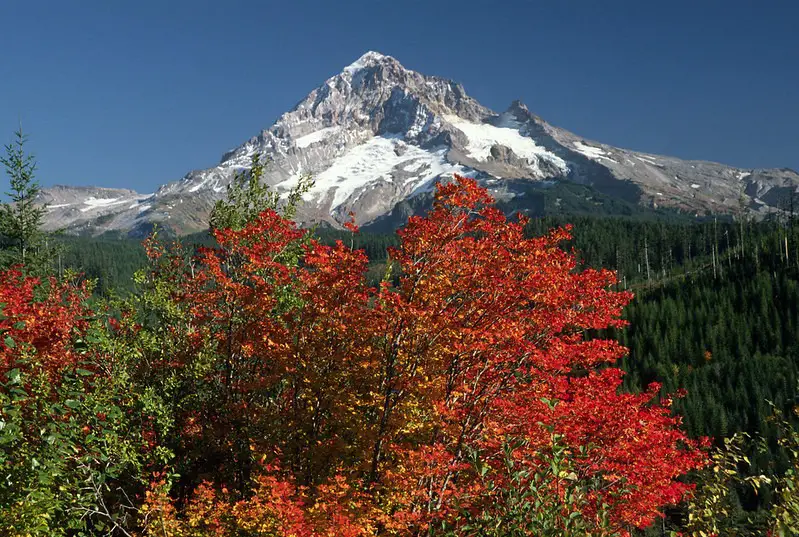
via Wikimedia Commons)
Things To Know
- Difficulty: Hard
- Trail type: Out & back
- Distance: 8.5 miles
- Elevation gain: 2,675 feet
- Dogs: On leash
Mirror Lake Loop Trail: Description
The Mirror Lake Loop Trail is one of the best hikes in Oregon. The trail treats you with a variety of hiking sights. Along the trail, hikers can enjoy:
- Mountain views
- Waterfalls
- The chance to spot a variety of birds and wildlife
The Mirror Lake Loop Trail challenges even the most experienced hikers. You should prepare for some periods of steep inclines and declines. Take your hiking poles!
When you reach the trail’s end, you will love the stunning views! Both novice and experienced hikers will enjoy this moderate hike.
Things To Know
- Difficulty: Moderate
- Trail type: Loop
- Distance: 4.2 miles
- Elevation gain: 672 feet
- Dogs: On leash
Tamanawas Falls Trail: Description
Tamanawas Falls Trail is a popular hike that offers:
- Magnificent mountain peak views
- Majestic waterfalls
- Abundant birds and wildlife
- Breathtaking scenery
As soon as you begin the trail, you’ll be surrounded by nature. As you hike, you hear the rushing river, and see the gorgeous mountain views.
Keep an eye out for bald eagles soaring through the sky. Also, you might see a red fox darting through the trees.
The trail offers a chance to see some of Oregon’s most famous birds like the Western Meadowlark and the Northern Flicker. Listen for birds chirping in the trees. Be on the lookout for deer or elk grazing in the nearby meadows too.
The trail ends at the majestic Tamanawas Falls. You will love watching the falls cascade down the mountainside.
You have parking, restrooms, and other services near the trailhead. Wear appropriate hiking shoes or boots that provide support and traction.
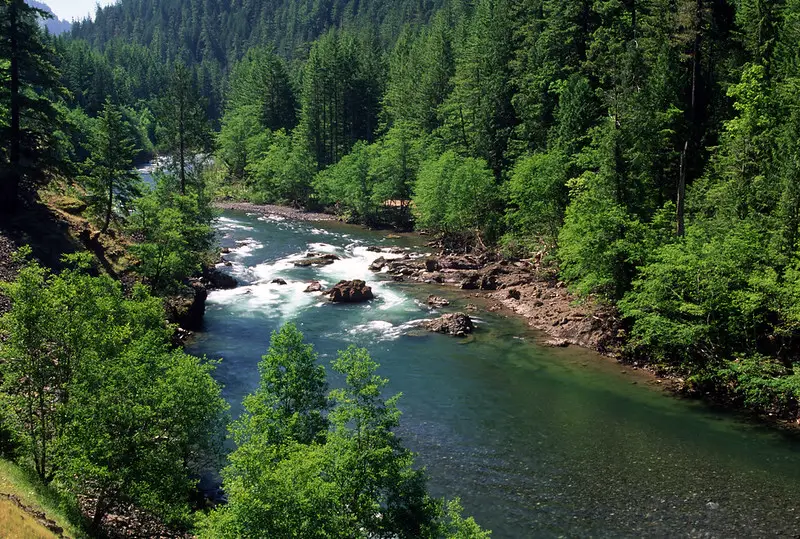
Things To Know
- Difficulty: Moderate
- Trail type: Out & back
- Distance: 3.4 miles
- Elevation gain: 580 feet
- Dogs: On leash
Tom, Dick, and Harry Mountain via Mirror Lake Trail: Description
When you explore this trail, be ready for the breathtaking beauty. The trail winds through forests and takes you to sweeping mountain views.
Along the way, you will be captivated by the:
- Sounds of rushing streams
- Vibrant wildflower’s colors
- Multitudes of birds and wildlife
At the top of the trail, you get a splendid Mirror Lake view. The shimmering lake is surrounded by lush forests that create an awe inspiring scene.
Things To Know
- Difficulty: Hard
- Trail type: Out & back
- Distance: 8.2 miles
- Elevation gain: 1,715 feet
- Dogs: On leash
Trillium Lake Trail: Description: Mt. Hood Hikes
The Trillium Lake Trail is an excellent hiking trail known for its:
- Mountain Views
- Waterfalls
- Birds
- Wildlife
The trail ranges from moderate to difficult in places. The views from the trail are spectacular. With Trillium Lake as the backdrop, hikers are treated to a stunning view of snow capped peaks and lush forest.
Trillium Lake Trail is a must hike if you want a perfect day of hiking. It’s all about the:
- Mountain views
- Waterfalls
- Birds
- Wildlife
Hiking trails twist and wind around the lake and give you a lot to explore. The tail lets you see astounding mountain views. You also see rolling hills and valleys in the distance. The lake is so still that it almost looks like a mirror.
The lush greenery surrounding the trail gives you a peaceful feeling. This moderately difficult trail makes this a perfect day hike for the family. Also, the trail is well maintained and marked with signs that help you stay on the trail.
A lush green forest with ferns and pine trees as far as the eye can see frames the trail. Here and there, hikers see wildlife like deer or chipmunks.
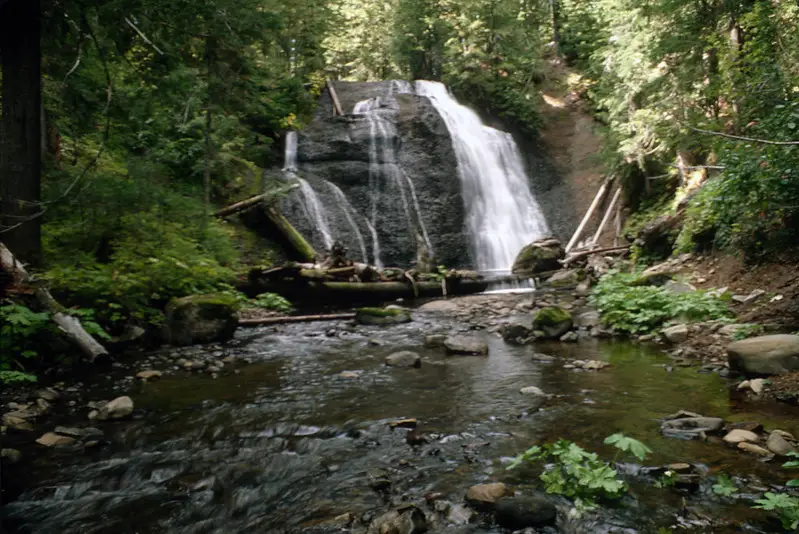
Things To Know
- Difficulty: Easy
- Trail type: Loop
- Distance: 1.9 miles
- Elevation gain: 26 feet
- Dogs: On leash
Summary: Best Mount Hood Hikes
Mount Hood is well known for its hiking trails and stunning scenery. The sprawling national forest offers a range of trails. Trails range from beginner friendly to challenging hikes.
Mount Hood’s hiking trails treat you to outstanding beauty. It’s no wonder Mount Hood is one of the premier hiking spots in the U.S. with its:
- Towering snow capped peaks
- Lush meadows
- Deep forests
The forest has easy day hikes and multi-day backpacking hikes. Mount Hood Forest’s trails have a LOT to offer!
The best Mount Hood hikes offer staggering, sweeping views of the Cascade Mountain Range and Mount Hood. The views reach far into the distance to include the forest’s beauty and wide, open meadows. From the trail’s sweeping heights hikers see:
- Sheer wilderness beauty
- Snow capped peaks in the distance
- Alpine meadows with vibrant wildflowers in full bloom
- Majestic forests
The Mt. Hood Forest has more than 600 miles of hiking trails. Trails include easy, flat trails to harder, steeper trails. The area is home to a variety of wildlife including:
- Elk
- Deer
- Cougars
- Bald Eagles
- Many kinds of birds and fish
It’s easy to explore the forest trails and get lost in nature’s beauty with all the:
- Plentiful trees
- Fresh, clean air
- Well maintained trails
Mount Hood National Forest is home to many beautiful hikes. Come experience Mount Hood’s hikes. You’ll be glad you did!
If you need hiking gear, Amazon has some very good gear at economical prices.
Pin This Post For Later:
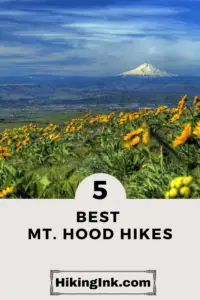
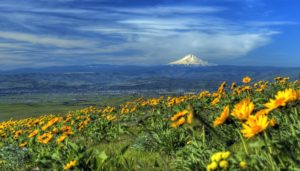
U.S. Forest Service- Pacific Northwest Region,
Public domain, via Wikimedia Commons)
